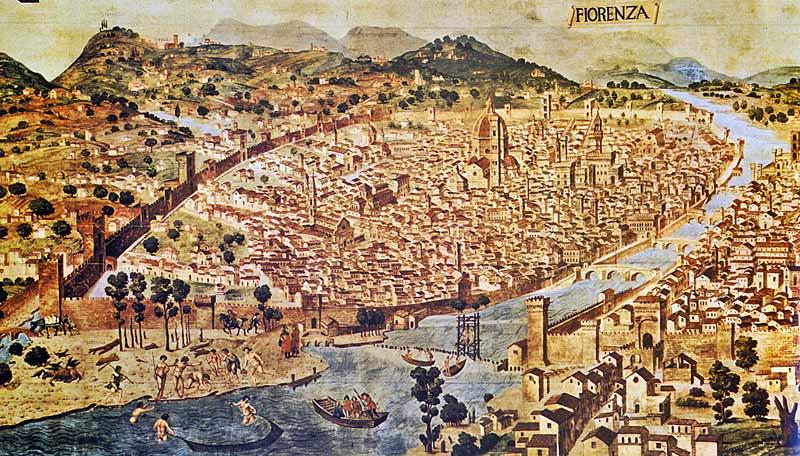
12 Nov Torcicoda
Posted at 10:00h
in Curiosities of Florence
Torcicoda Florence
Torcicoda florence: discover more
WALKING ALONG THE HISTORICAL VIA TORCICODA, TO SEE THE AMPHITHEATER THAT IS NO MORE
If you take Via Torta, one of the streets that crosses Via Verdi, precisely in front of the Basilica of Santa Croce, you will find yourself almost right away in a narrow street that curves. If you continue on ahead to the left, passing Via Isola delle Stinche, you will notice that Via de’ Bentaccordi and Piazza dei Peruzzi are also curved and even the walls of the buildings are convex. Finally you end up in Via de’ Benci and you will have traveled the full length of the old Via Torcicoda. The origin of the name is evident: the street, that made a circle on itself, recalled a cat chasing its own tail. What is less obvious is the reason for the curious shape of this street.Beneath the Houses, a Roman Amphitheater
The elliptical shape of the medieval street Via Torcicoda was formed by simply following the shape of an even more ancient building, the Roman Amphitheater in Florence.In the place of the houses that you can walk along, imagine the archway openings of a small Coliseum and you will have an idea of what the inhabitants of Florentia saw in the 2nd century after Christ. The ancient city was something Julius Cesar wanted to build on the Arno, and it was subsequently founded by the Emperor Ottaviano. Like in all Roman centers, also in Florentia there had to be an amphitheater: it was built between 124 and 130 A.D., outside the city walls that rose on what is today Via del Proconsolo. The amphitheater had a maximum diameter of 126 meters and could host about 20,000 spectators. This was not much compared to the 87,000 of the Coliseum, but enough for the inhabitants of Florentia and its surrounding areas. During the High Middle Ages, Florence expanded and went beyond the Roman walls, arriving up to the amphitheater that disappeared below the new buildings. No one was interested in those games and circuses any more, and the amphitheater was used for housing. New buildings rose not only along the walls of the amphitheater, but also closing up the external arches and the bleacher seats and building even in the arena. The space inside was thus crossed by two streets, the current Via dell’Anguillara and Borgo dei Greci. The most famous building is Palazzo Peruzzi built at the end of the Thirteenth century. The façade is on Borgo dei Greci but the back side is on Piazza dei Peruzzi and presents regular arches the re-evoke the entrances to the old amphitheater.
No Longer Torcicoda, but forever Tòrta
In addition to the two roads that pass between the houses, another one was created that runs alongside it, following the elliptical circumference of the old Roman amphitheater. For its shape, as we have already seen, it was called Via Torcicoda. Over the centuries, the road was then divided into several parts that took different names, that they still have today, and the first segment was called Via Tòrta, that is to say ‘contorted’. Start here and discover the amphitheater that is no more: just follow the old Via Torcicoda to see it again.The places: Via Torta, Via de’ Bentaccordi, Piazza dei Peruzzi
From Canto degli Aranci you can discover the charm of Torcicoda in a few minutes and even take a vacation in a suite that bears its name. If you like it, reserve!
